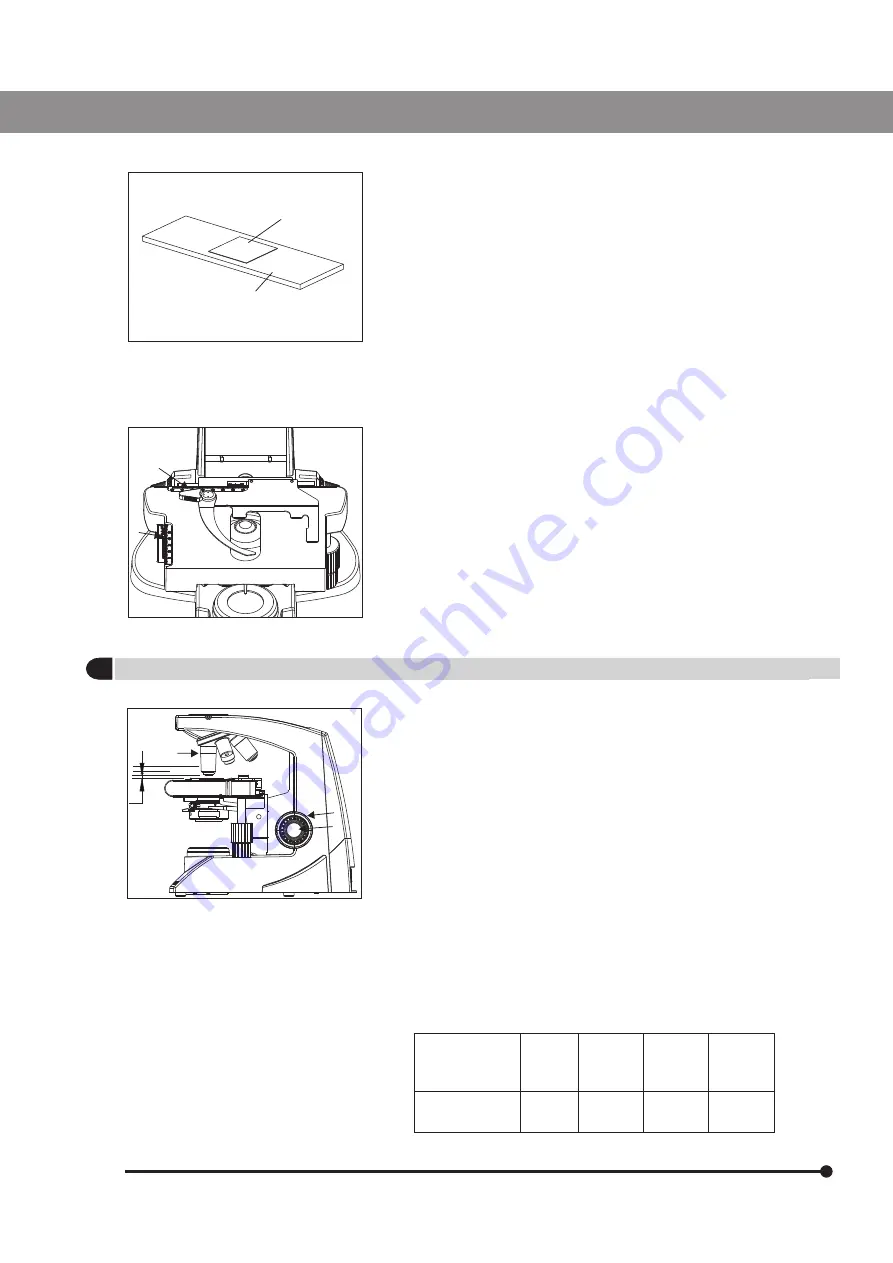
Fig. 23
Fig. 24
Fig. 25
WD
WD (mm)
4X
30.0
4.5
0.50
0.13
10X
40X
100X
Objective
Magnification
2
2
3
1
1
Slide glass
Cover glass
Lx 400
17
3
ADJUSTING THE FOCUS
Cover glass
This is the glass plate paced on the specimen. For optimum optical
performance, the cover glass thickness, which is the distance
from its surface to the specimen surface, should be
0.17mm.
Slide glass
This glass plate should ideally have a length of 76mm, width of
26mm ± 1mm and thickness between 0.9 and 1.4mm.
“Vernier Scales”
These scales allow for easy identification of the specimen’s posi-
tion (coordinates), making it easy to return to a particular region
of interest after scanning the slide. (Figure 24)
1. The horizontal coordinate can be read at position (1) on the
specimen holder.
2. The vertical coordinate can be read at the index line (2).
Focusing Procedure (Figure 25)
1. Rotate the coarse adjustment knob (1) clockwise so that the
objective (3) is as close as possible to the specimen (we
recommend starting with 10X).
2. While observing the specimen through the eyepieces, slowly
rotate the coarse adjustment knob (1) counterclockwise to lower
the stage.
3. When coarse focusing of the specimen is obtained (an image is
observed), rotate the fine adjustment knob (2) for fine
detail focusing.
Working Distance (WD)
The WD refers to the distance between each objective and the
specimen, when acute focus of the specimen is obtained.
9126000-795
Lx 400
Issue 1.5
Printed on April,2019













































